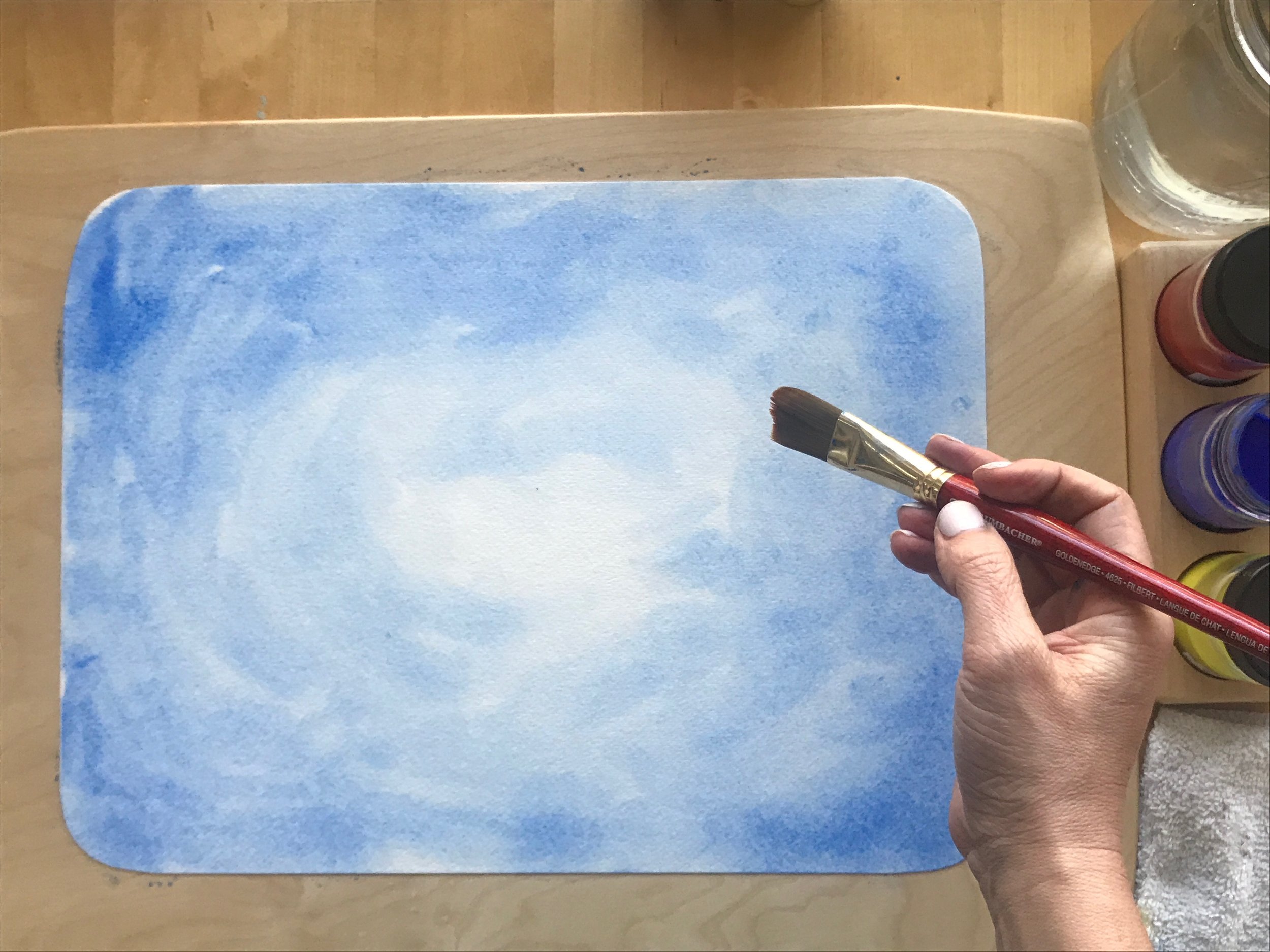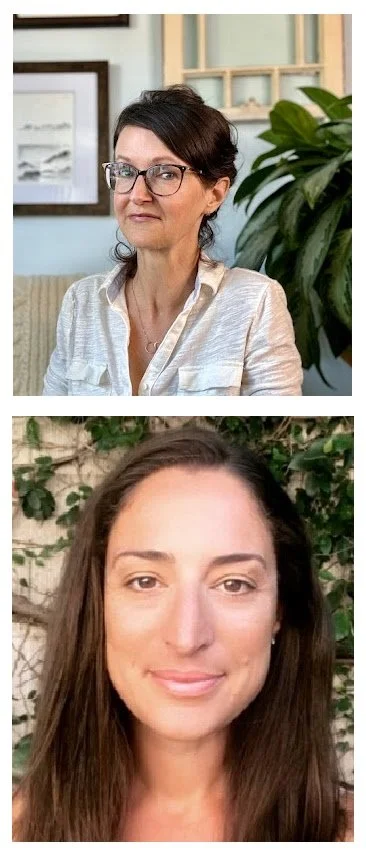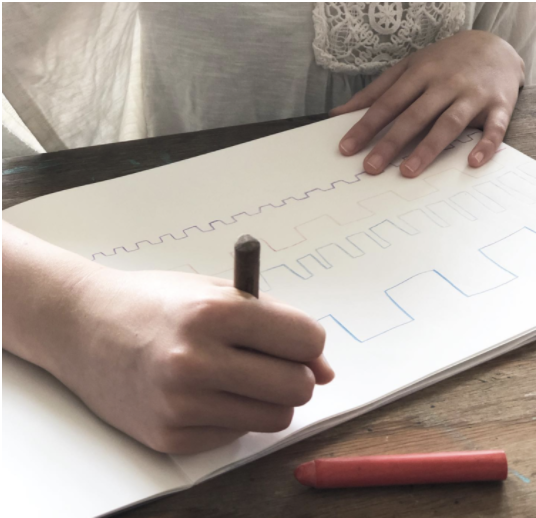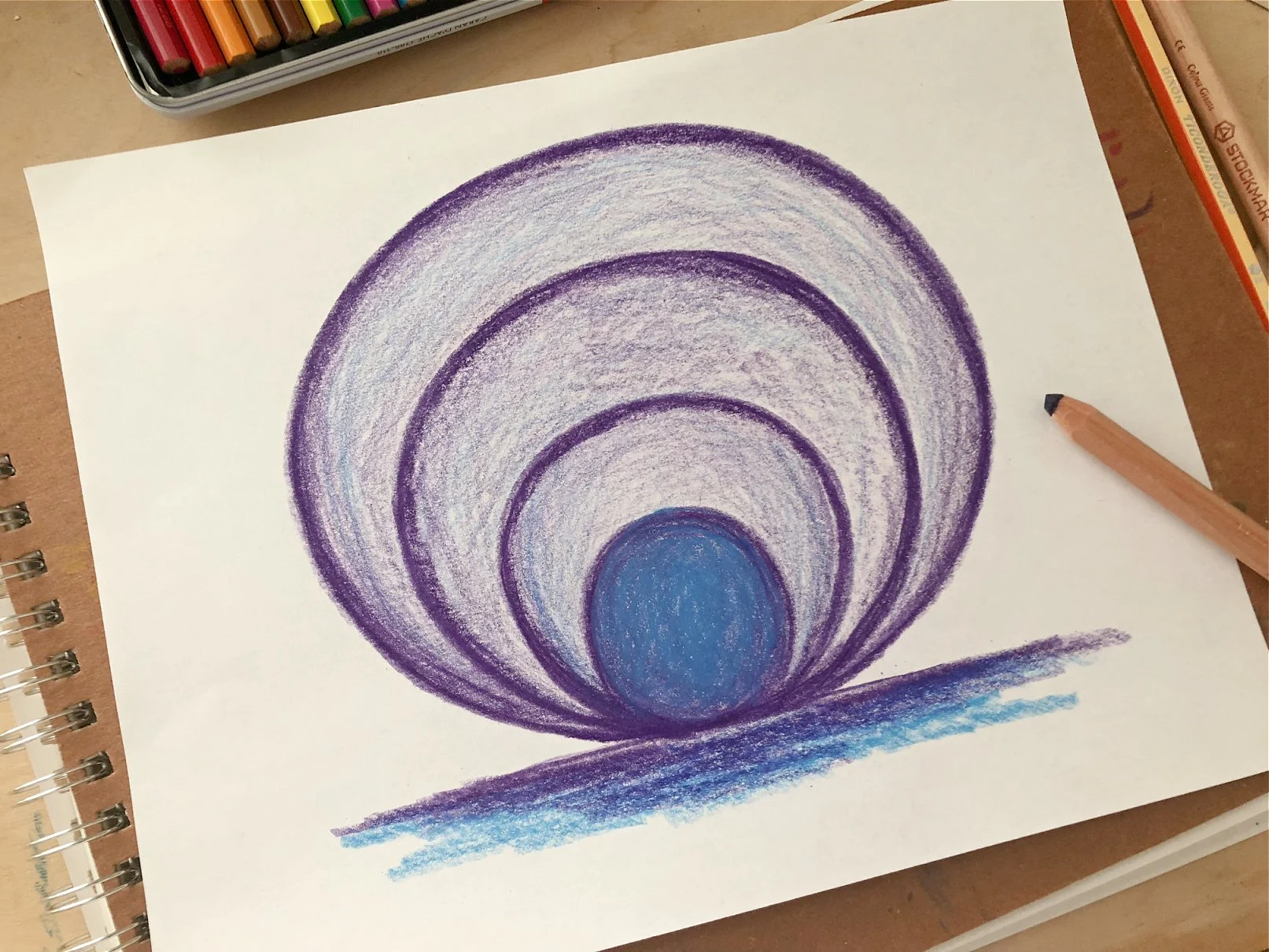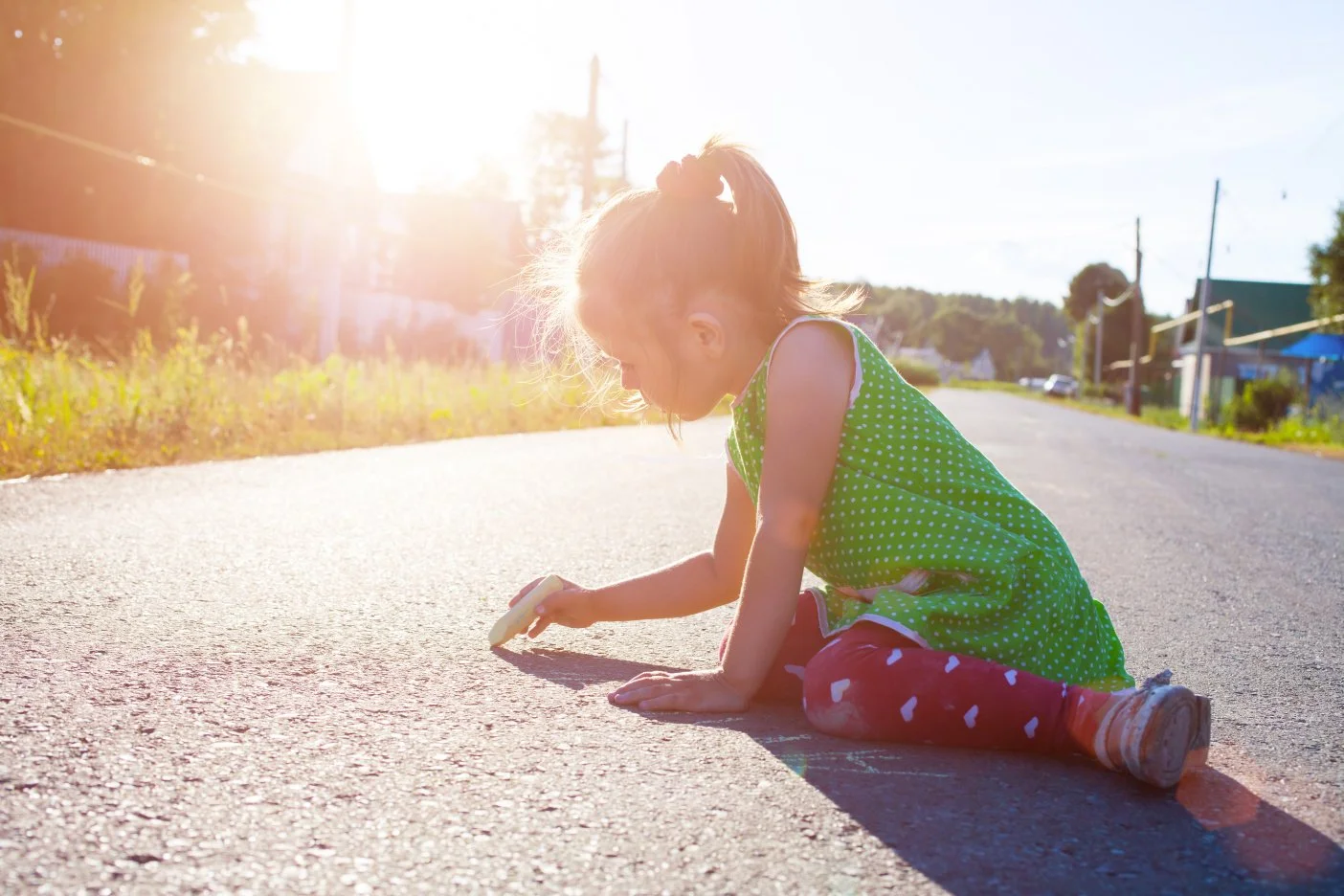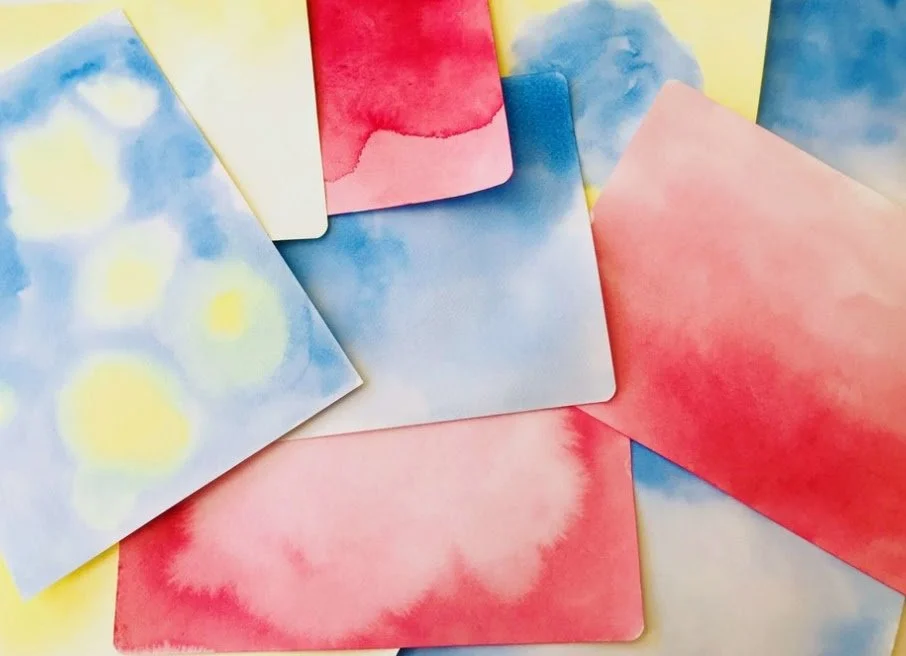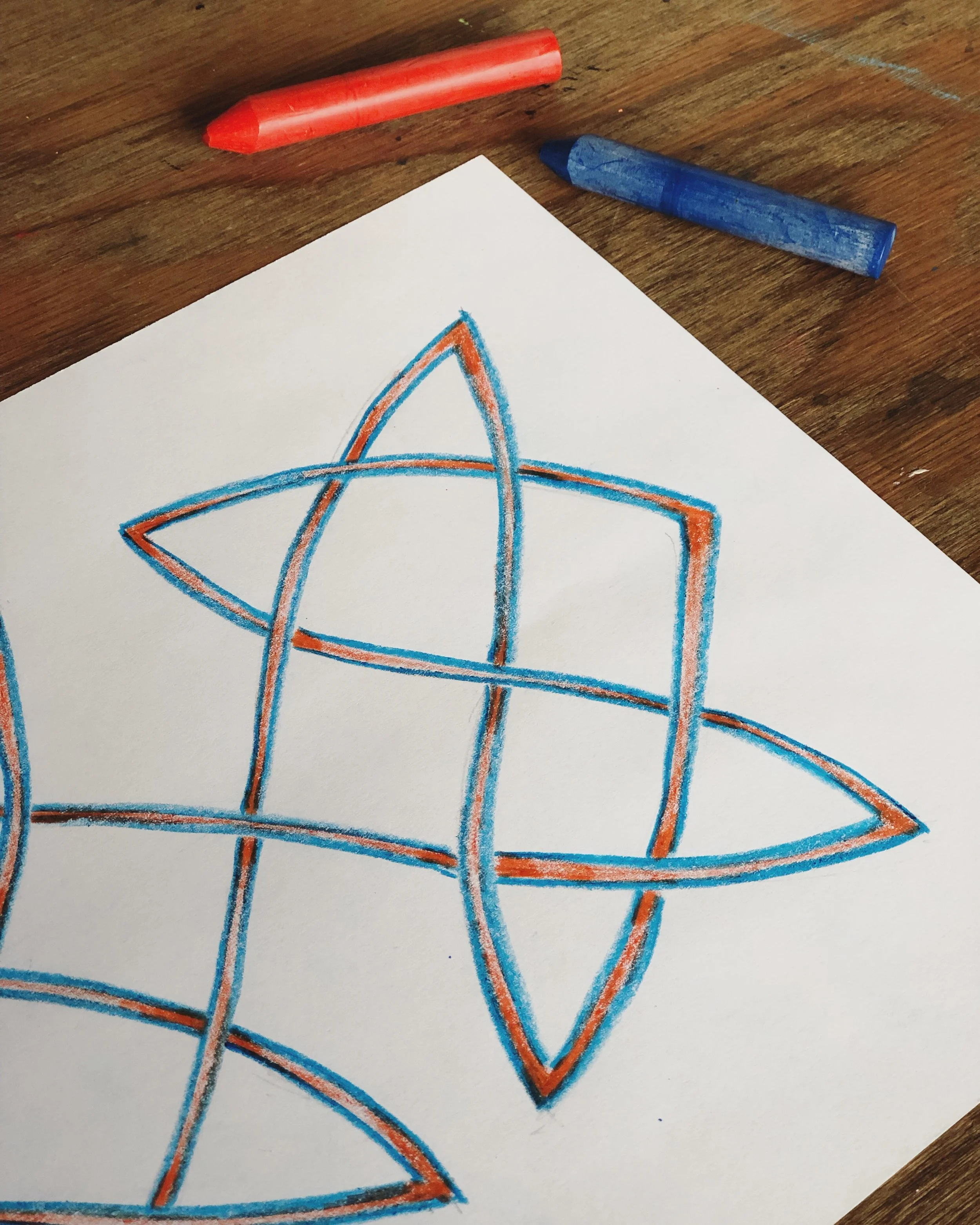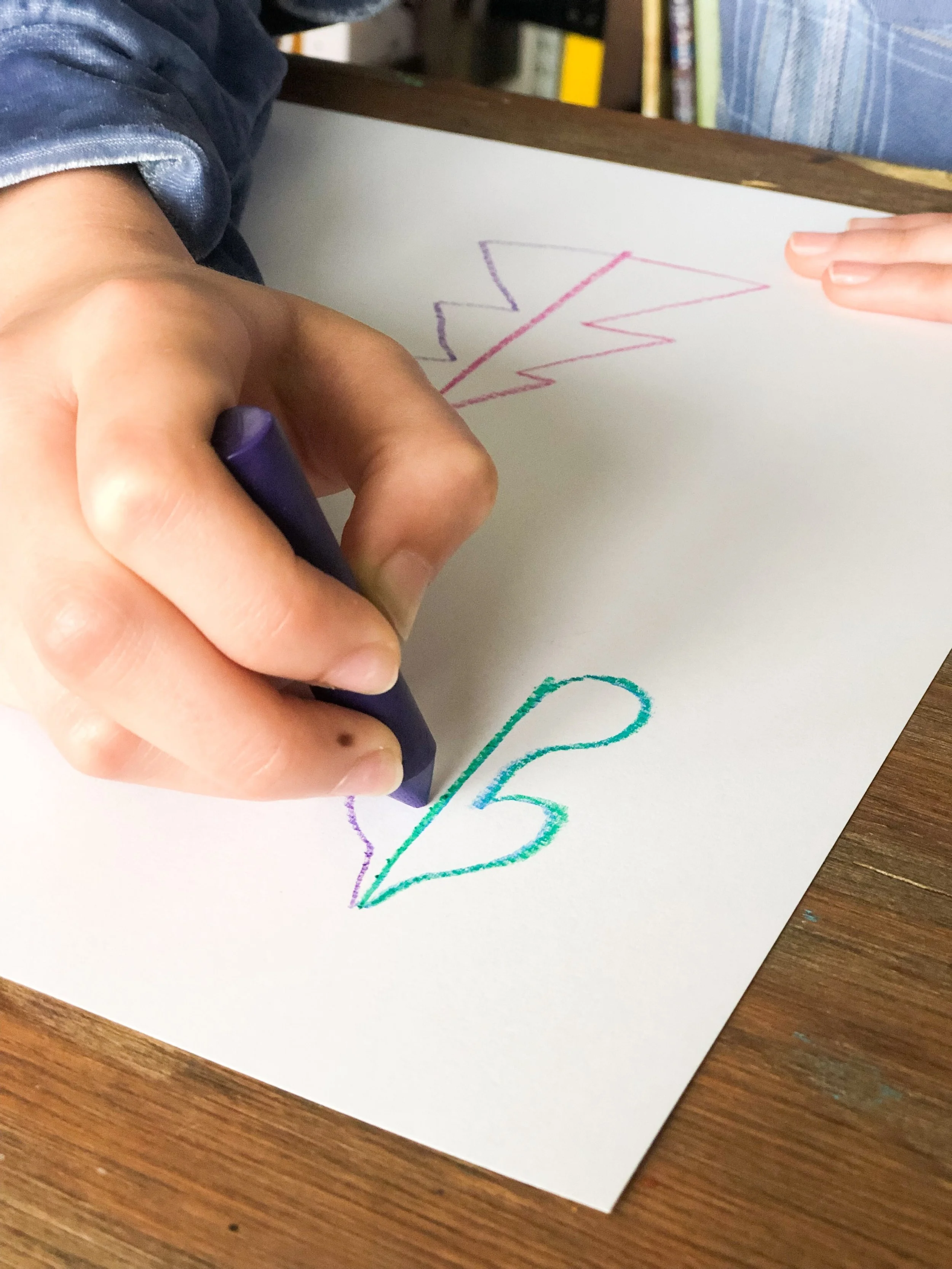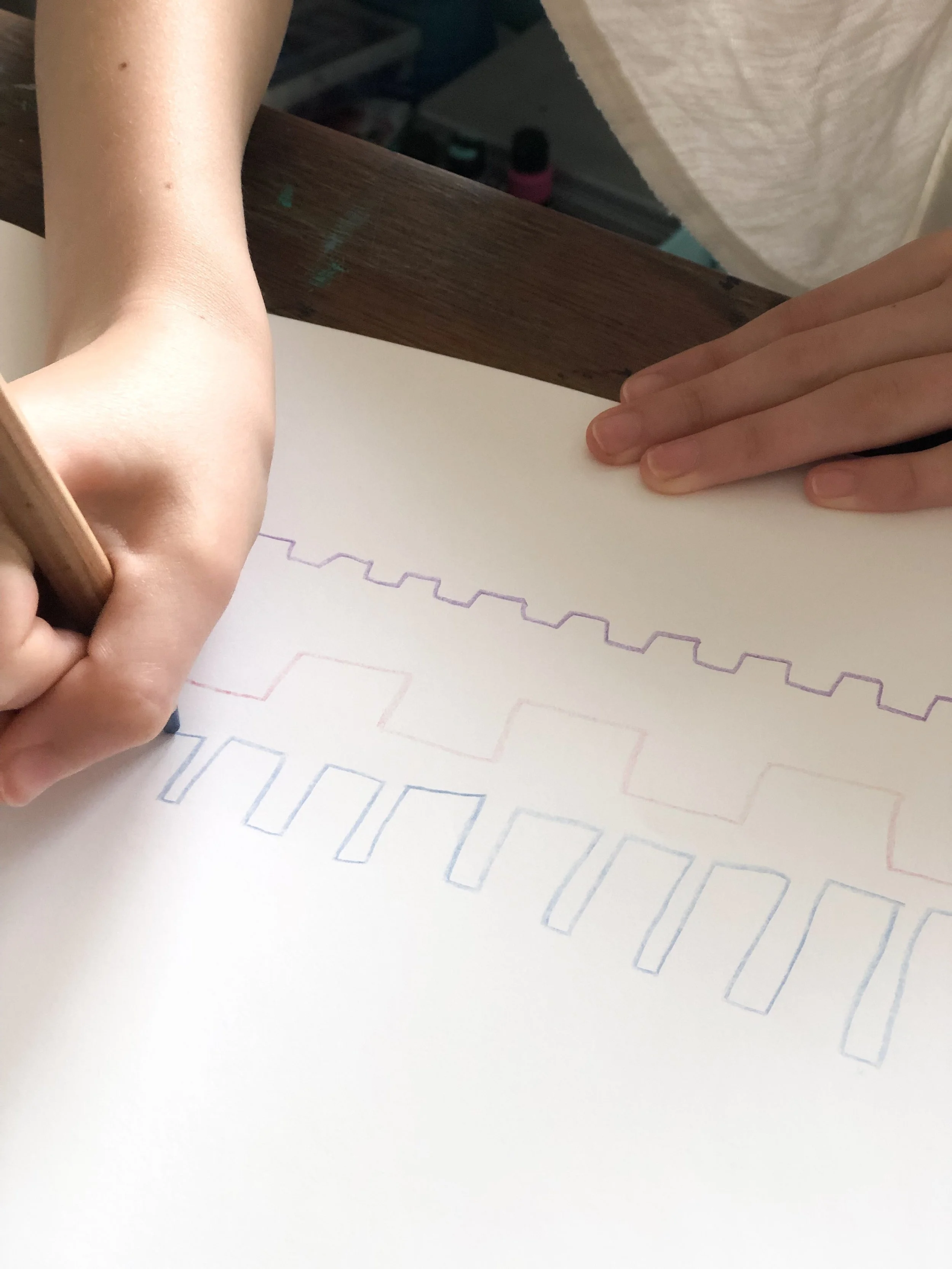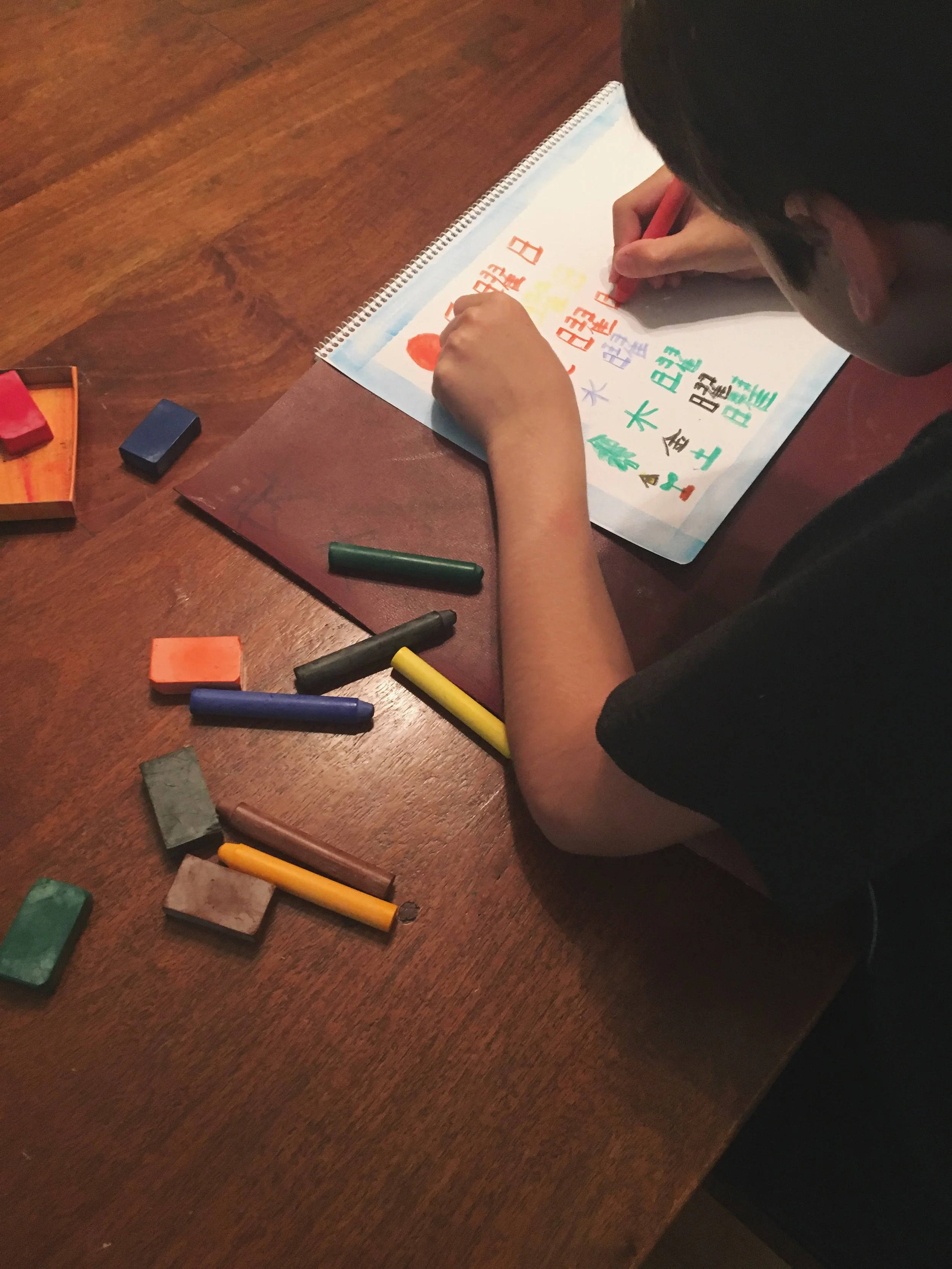
Waldorfish Blog
Waldorf Grade One Painting : Out of the Color
Connecting with the color blue in a simple, yet meaningful painting activity.
Children in Waldorf schools begin painting with liquid watercolors on damp paper in preschool and kindergarten.
The use of this medium continues into grade one, however at this point there is a shift in the way the weekly painting lesson is presented.
The 6-7 year old child learns through experiences. They’ve left kindergarten and are transitioning slowly into more structured learning.
In his Colour Lectures, Rudolf Steiner talks about the importance for each artist (student) to know each of the colors, to understand them individually, and also how they interact with each other. He specifically says that we need to experience the colors in our feeling life in order to understand them. Once we understand them in their trueness, then we can really use them.
“Let us try to sink ourselves completely into what we receive through colour from the rich and varied world around us. We must feel what is in colour if we wish to penetrate into its true nature, bringing insight into our feelings. We must question our feelings about what is living in the colour which surrounds us. ”
Painting in primary colors is a wonderful place to begin for the growing first grader.
Painting lessons create opportunities for students to develop an intimate understanding of the colors through their imaginations, movement, and imitation.
When the teacher brings the lessons in partnership with short verses and stories (which help to personify the colors), the children live into each experience fully.
“Painting lessons also provide the teacher with a further opportunity for getting to know the children’s soul constitution in even more detail. Different temperaments and constitutions reveal themselves through what and how the children paint.”
Bring Waldorf watercolor painting curriculum into your homeschool routine today!
In grade one the lessons are simple color experiences guided by the teacher. It is purely artistic work - there is no expectation of the children creating a specific form or picture of something. These experiences are ordered in such a way that allows the children to begin to understand the dynamics of the colors by themselves, and in relation to each other.
The painting lessons begin very simply, with yellow by itself. Then the children will experience only blue. Eventually the two, yellow and blue, will be brought together on the page and the children will experience them together. Next, red is introduced by itself. Eventually red and yellow will be presented together, and then red and blue. Each of these experiences offers the children something new to live into, all the while expanding their understanding of the nature of each of the colors. (Of course, a natural result of bringing 2 primary colors together in a painting lesson is the birthing of the secondary colors - orange, green and purple. A wonderful moment in any painting lesson!)
As the year progresses, the teacher guides the children as they experience all 3 colors on the page together, culminating towards the end of the year with the children learning to create a color wheel. The color wheel becomes the foundation of many future paintings the children will create in each progressing grade.
Link to the Rawson & Richter book mentioned in this post.
Looking for support around painting with your grade one child? We made you something!
About the Authors
Robyn Beaufoy is Waldorfish’s CEO, and also a course instructor for Simple Season (coming soon!), Waldorf Art for Beginners, and Weekly Art Foundations. You’ll find her intuitive touches and influences throughout everything Waldorfish offers! Robyn has been in the world of education for over 25 years, with an MA in Education and a certification in Waldorf teaching - she also homeschooled both of her children for some of that time. In 2012 Robyn co-founded Waldorfish.com, creating it with the vision of making Waldorf inspired-art and pedagogy more accessible, joyful, and doable for homeschoolers all over the world.
Amanda Ziadeh Mercer is a dynamic Waldorf Teacher, and is the creator of our Painting courses for the grades 1-3. She has had the pleasure of working with children in varying stages of development, ranging from infants in Parent-Child programs to the more mature students of the eighth grade. This wide range of experiences has gifted her a full picture of the developmental stages of childhood.
What is Form Drawing?
Form drawing is a cornerstone of Waldorf curriculum in grades 1-4.
I will freely admit to anyone that knows what Waldorf form drawing is that I was terrified to bring it into a homeschool environment.
What, exactly, was encoded in those mysterious lines and shapes? What esoteric wisdom did I need to attain before I could try to impart this practice to my son? Like most things I fear, the answers were not as complicated as I originally thought.
“The child’s capacity to develop an integrated sense for spatial orientation – upwards, downwards; left, right; center, periphery – is supported in the practice of form drawing.”
Form drawing, it turns out, is a brilliant way to work with one’s senses...senses being of great importance in a Waldorf education. Paper and pencil serve as a lantern, illuminating our inner selves, the forms creating a blueprint of our inner (and outer) orientation.
" Rudolf Steiner, in his many lectures on this subject, speaks of twelve senses. Added to the usual five, there is a human sense for rhythm, warmth, balance, movement and so on..."
- The Incarnating Child, pg. 73
Form drawing is a beautiful way to bring color and form together.
Beginning in first grade and extending throughout her time at a Waldorf school, a student engages in drawing exercises that range from very simple to very complex, according to her grade and various topics of study. Straight and curved lines form the foundation for letters in 1stgrade, for Celtic knots in 4th and Geometry in middle school. Over and over, drawing both imparts knowledge and folds it back into oneself.
"Straight lines and curves are the starting points for form drawing. This begins with the discovery that the line is a path along which one can move. Children should experience the characteristic difference between straight lines and curves through drawing them, after having explored their character through whole bodily movement in space."
- The Tasks and Content of the Steiner-Waldorf Curriculum, p.137
Much can be ascertained about the form drawer from this kind of work, and the analytical angle is an important one. There is, however, another important aspect of Form Drawing that should not be overlooked: it’s a lot of fun. As soon as I embraced form drawing as the journey itself (instead of a perfect form being the destination), our weekly work became something to look forward to.
Don't forget to practice!
Forms can and should be returned to time and again for a variety of reasons that will become clear to you as you study, draw, reflect, and repeat. Remember that they are not about achieving anything in particular. Think of them as a friendly guide.
Form drawing is a deep ocean that one could spend an entire lifetime learning to navigate. Don’t let this stop you from jumping in. Buy a book, look up #formdrawing on social media and reach out to people whose ideas are of interest to you, but most importantly pick up a pencil, chalk, stick or block crayon, suspend your judgment, and encourage your child to do the same.
This radical act of trust in the power of art to teach and transform is the lynch pin of Waldorf Education.
Try a Free Form Drawing lesson!
About the Author
Cristina Havel lives in Southern California where she and her husband have worked together for nearly 2 decades. They homeschool their son using the Waldorf pedagogy as a guide and believe in the transformative powers of art and nature.
Related content:
New course line-up!
We've finalized our course offerings for our next school year!
Individual info pages for each one will be available soon on our website. For those who, like us, get a little twitchy with all the waiting, here's what we know for certain .....
Geometry
Photo credit: Jessica Richardson
Brian is teaming up with fellow Waldorf teacher, Caitlin Amajor, for this G5-8 series! We have a FAQ page here, where you can learn more about this artistic, inspired program. Registration opens on July 15th! Courses begin on Sept. 3rd. There is also a link to a new free lesson on the FAQ page.
Grade One wet-on-wet painting
Waldorf teacher Amanda Mercer has been busy creating a beautifully supportive program for the Waldorfish community! This video series will guide parents & teachers on a journey through each primary color via wet-on-wet painting techniques & original verses. G2 and G3 courses are in the pipeline as well, although release dates for these are not set yet. The G1 course is OPEN for enrollment! Learn more about it, here!
Photo credit: Amanda Mercer
For the 2018/2019 school year we are pulling together our favorite lessons from the first two sessions of this program! This collection will be perfect for families who have not participated in WA previously. As in prior sessions, the lessons will post x1 per week, and Brian & I will be actively involved in the classroom. Registration will open July 15th, the course will begin August 10th. (see updated info, here!)
Festival Art
We're teaming up with storyteller Sara Logan for this new course! 10 original/adapted stories paired with art lessons to carry your family through the full circle of a festival year!! This course is ideal for families who have previously participated in the Weekly Art program, or those looking for less frequent art lessons than offered in our other programs. NOTE: this program will initially only be available to WA students currently enrolled in the '17-18 session. It will become available to the whole community in time for the '18 Advent season!
As always, send us your thoughts + questions by emailing us at support@waldorfish.com
All our best to you from the garden,
~Robyn (& Brian nearby) Wolfe
More Than Meets The Eye: The Role of Art in Waldorf Education.
Photo: Cristina Havel
The liberal use of color that infuses all aspects of a Waldorf Education is not only delightful, it’s deliberate.
Beautiful main lesson book entries created by students, beginning in first grade with the heartwarming “One Sun”, increase in complexity throughout the grades. Color, form, technique, and meaning converge to animate all subject matter from math to science, foreign language and native language studies (and for more on art in the classroom, click here!). What is the value of this approach?
“The important thing is to arouse in children a real feeling for life, and color and form have the power to lead right into life...these details are essential to the vitality of the work.” -- Rudolf Steiner, 1922, The Spiritual Ground of Higher Education
Shaping and Perceiving
Artistic endeavors sharpen two very important human skills: the ability to shape, or see, and the ability to perceive, or distinguish. When practiced over time using diverse techniques across a variety of subjects, something very special emerges: the ability to shape and perceive new ways of looking at the world. In 1st grade, “One Sun” might become “one son” -- or “one bun”, as my son said to me, giggling, as I ate a hamburger when he was six. As the Waldorf student develops, connections continue to be made on ever deepening levels and the creative process is strengthened, resulting in students who are able to make connections across a variety of subjects. This skill is highly valued in our culture and is known as interdisciplinary thinking. It’s a truly holistic way of looking at the world and contributing effectively.
I am always doing things I can't do, that's how I get to do them. -- Pablo Picasso
Photo: Robyn Wolfe
The idea that a child cannot succeed in Waldorf Education unless he or she has excellent artistic skills is a myth to be dispelled. One child may draw endlessly in the early grades while another may be adept at origami or painting, or lose herself in handwork. Skills and interests “come in” at different times and under different circumstances. The creative process is sometimes mysterious and always transformative, no matter when and how it reveals itself. There is no wrong way to express oneself artistically. We must teach our children to create without judgement, only then will they be free from inner constraints and available to capture a world in perpetual motion. Therein lies the magic and power of art.
What is Waldorfish Weekly Art?
Waldorfish Weekly Art Foundations is a unique series of online art classes aimed at teaching a variety of methods widely practiced in Waldorf schools around the world. These classes can be used as weekly art classes that are folded into existing homeschool routines of any kind, as refresher courses for brick-and-mortar Waldorf school teachers, and, for those with far-reaching goals with respect to Waldorf homeschooling, as foundation courses that can be applied to different subjects as your student progresses through the grades.
Photo: Cristina Havel
"I’m so pleased to have found art lessons that draw on the Waldorf style as opposed to all of the “outline and color in” art lessons that seem to be popular online. We are really enjoying them!” ~ Heidi
"As a teacher - drawing figures for my chalkboard drawings has always been difficult, and I was rarely happy with the results. Learning how to first draw the gestures and then detailing it. Soooo much easier and successful! I will play more with this one!" ~ Debra
Looking for something?
Welcome to Waldorfish! We started this adventure in 2012 out of a desire to make Waldorf training more accessible to class teachers in remote locations and to homeschooling families everywhere! Read more, click here.
WE WON! Our Weekly Art courses were voted “best interactive art program.” Learn more about the award, here.
A few of our most popular blog posts:

